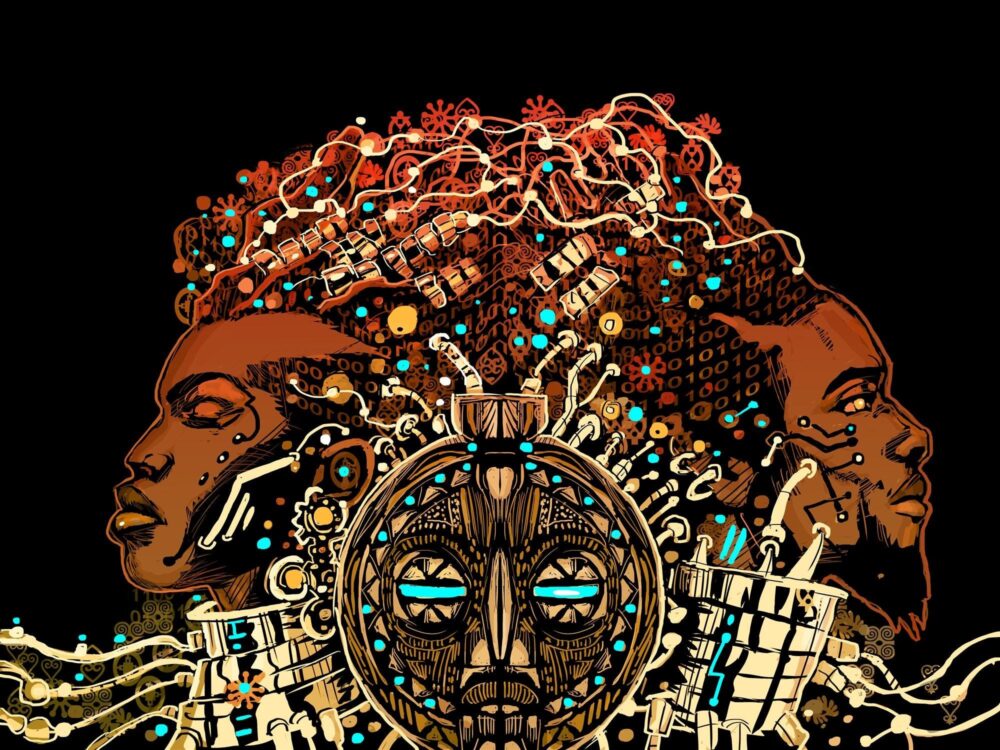
Afrofuturism 2.0 by John Jennings
https://nicolas-celnik.medium.com/afrofuturism-decolonizing-the-imagination-579dc1f3e7a9
The design aesthetic I am choosing for my upcycling project is Afrofuturism, a recent cultural and art movement that has increased in popularity in the last decade. Afrofuturism, as the name suggests, combines the cultural heritage of many different African countries and communities with modern digital technological design. Most oftenly, Afrofuturism uses traditional decoration, bodypaint, jewelry, dress, and shapes as basis for the subject matter and incorporates the bright neon colors and hard edges of futurism as a motif.
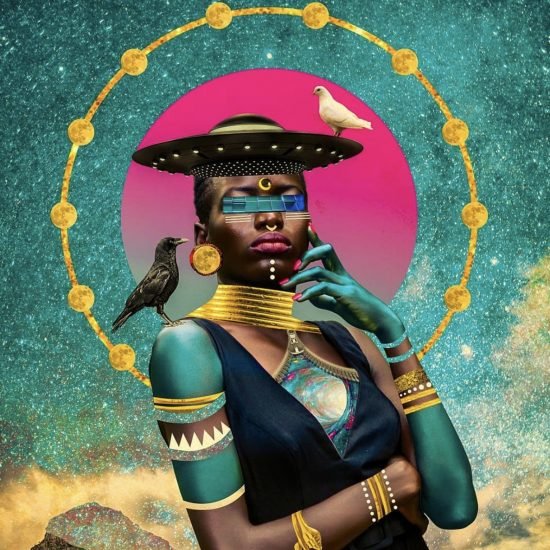
https://ebcpl.org/events/2022/2/9/afrofuturism-a-brief-introduction-amp-conversation
Afrofuturism uses contrast between the natural shapes and colors often found in traditional African aesthetics with the very industrial hard edges and electric color palette. However, similar to the cyberpunk aesthetic, the contrasting elements are so closely meshed together that the two become a new aesthetic that compliments the individual elements, rather than clashing.
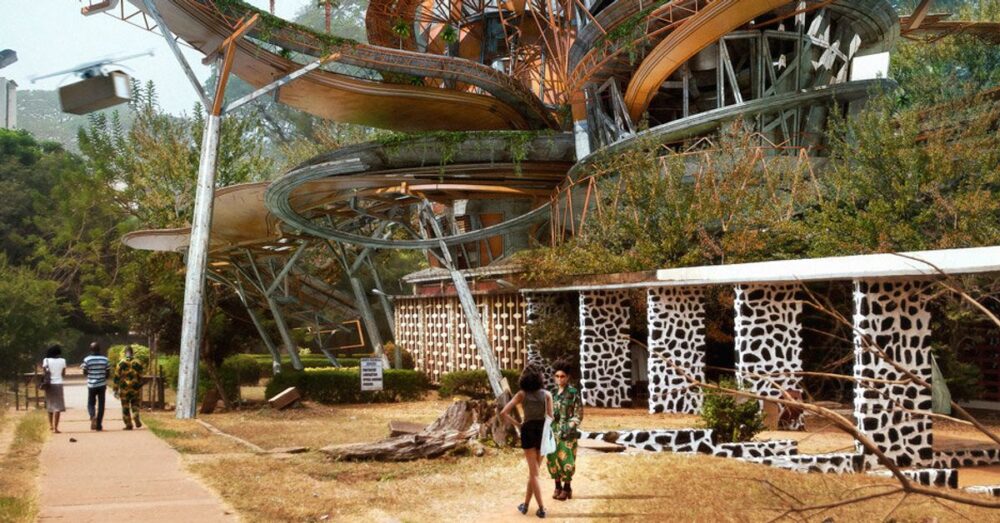
https://www.huffingtonpost.co.uk/entry/watch-beyond-the-afrofuturism-of-black-panther_uk_5c7e84b3e4b06e0d4c22ed38
While African persons are usually the focal point of Afrofuturistic art, the aesthetic extends beyond just fashion, once again pulling from African traditionalism as inspiration. By far the most widely recognized use of the Afrofuturism aesthetic are in the Marvel Black Panther movies, featuring the hidden away science fiction city of Wakanda.
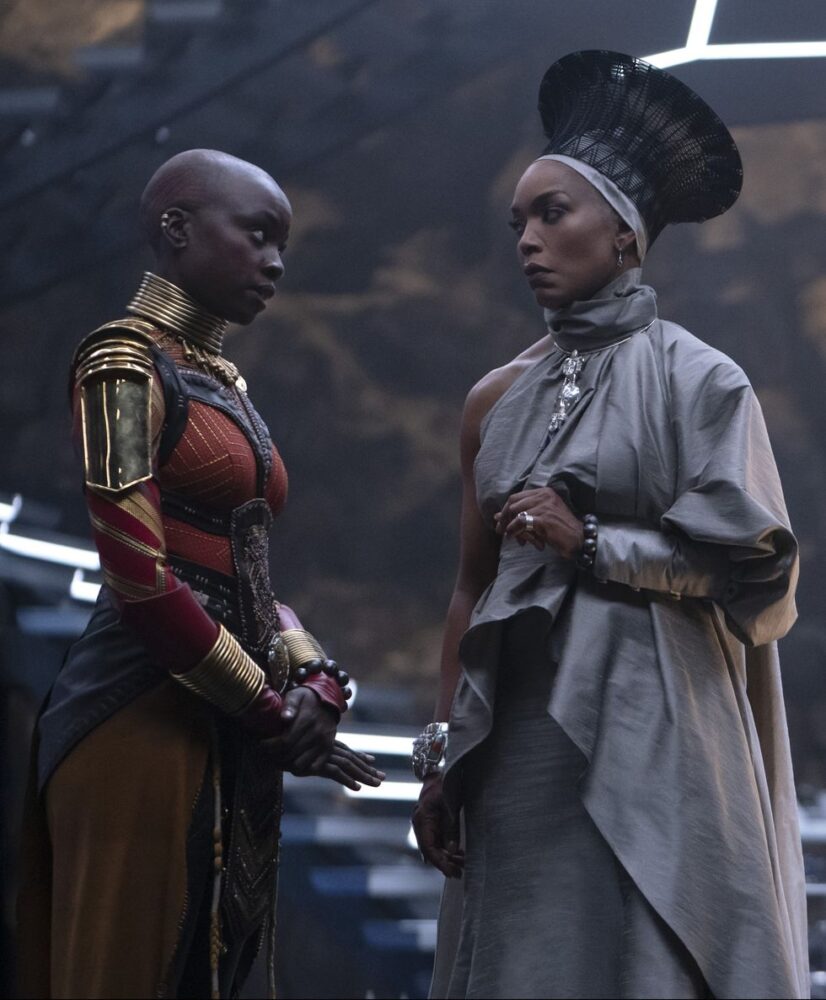
https://www.harpersbazaar.com/beauty/makeup/a41923218/black-panther-wakanda-forever-hair-makeup/
The reason I chose to do Afrofuturism for my upcycling project is primarily due to two factors: African traditionalism heavily uses natural and simple materials (easy for me to upcycle), and I love futuristic cyber aesthetics. When I learned that the upcycling project needed to adhere closely to a defined aesthetic, I struggled to think of anything that can be done with common household materials and not subtract from the target aesthetic. For example, it might be pretty challenging to follow a Steampunk aesthetic that strictly uses metals when I only have access to carboard, fabrics, and plastics. So I knew I needed an aesthetic that lended itself to simple upcycled materials; I started with the materials I had and found an aesthetic, rather than the other way around.
My creative spin on Afrofuturism will follow a pattern of material equivalence that connects historic African traditional and tribal materials to modern engineered and manufactured materials. Since traditional historic African art was/is handmade with natural materials the artist had/has around them, I want to mimic that process in my project. Where a traditional African art piece would use wood, I will use cardboard in the goal of invoking the same traditional design but with futuristic (modern household) materials. Instead of carved beads I use LED lights, instead of hairs and fibers I use 3D printed filament ‘spaghetti’ (tangled plastic filament waste).

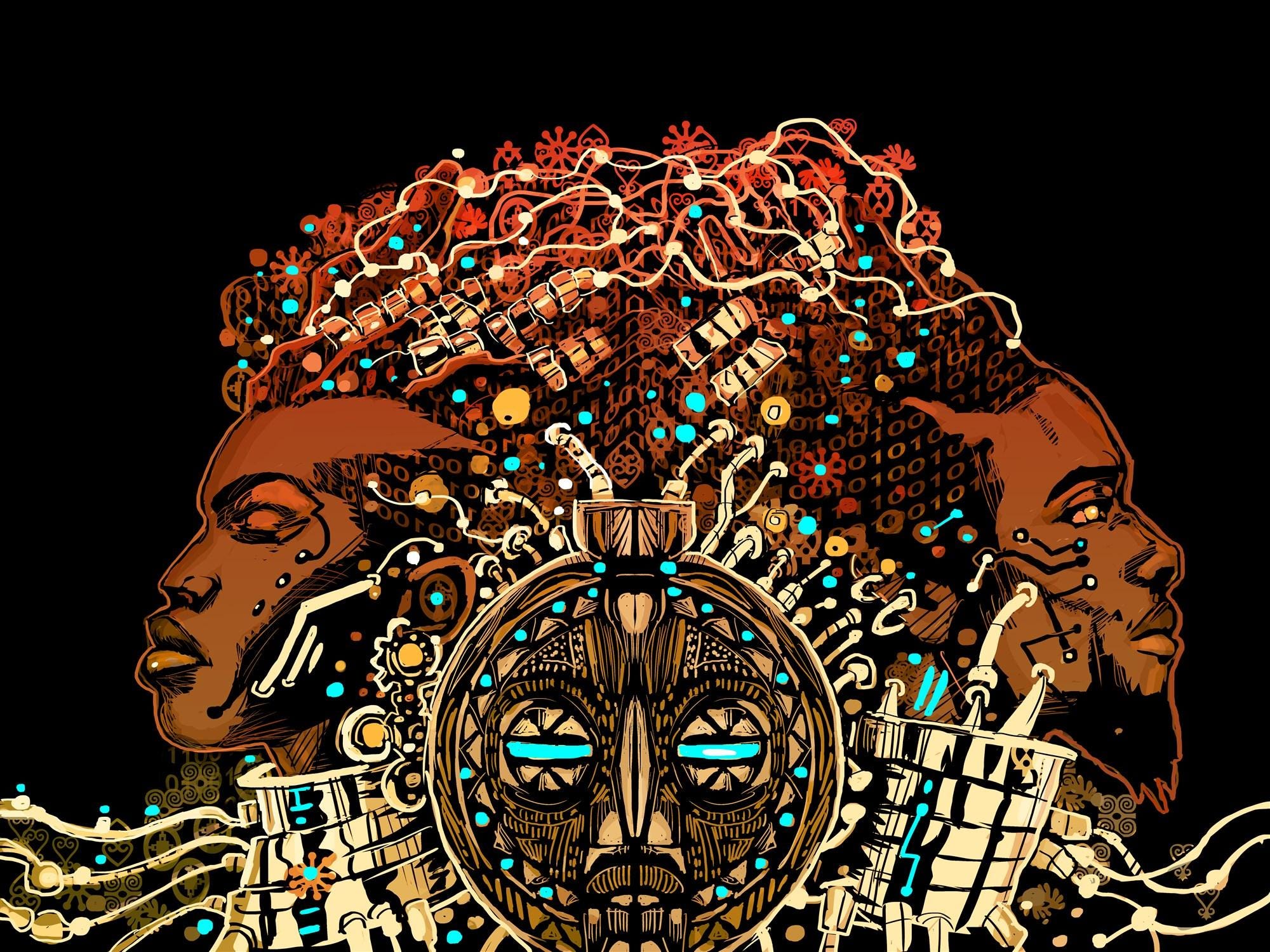
2 Comments. Leave new
Barrett! Very specific aesthetic, I think it is very cool that you chose such a unique aesthetic especially given that I feel cultural aesthetics like this are typically absent and underrepresented in the Western world. I also think it was useful how you tied it in to a pop-culture reference to give context. Do you think you will integrate your aesthetic primarily into the materials or design?
Hi Barrett, this is an exciting aesthetic I didn’t know before reading your entry. Do you know what your project will be? I like how your entry is structured and think that this aesthetic lends itself to a wide variety of projects!